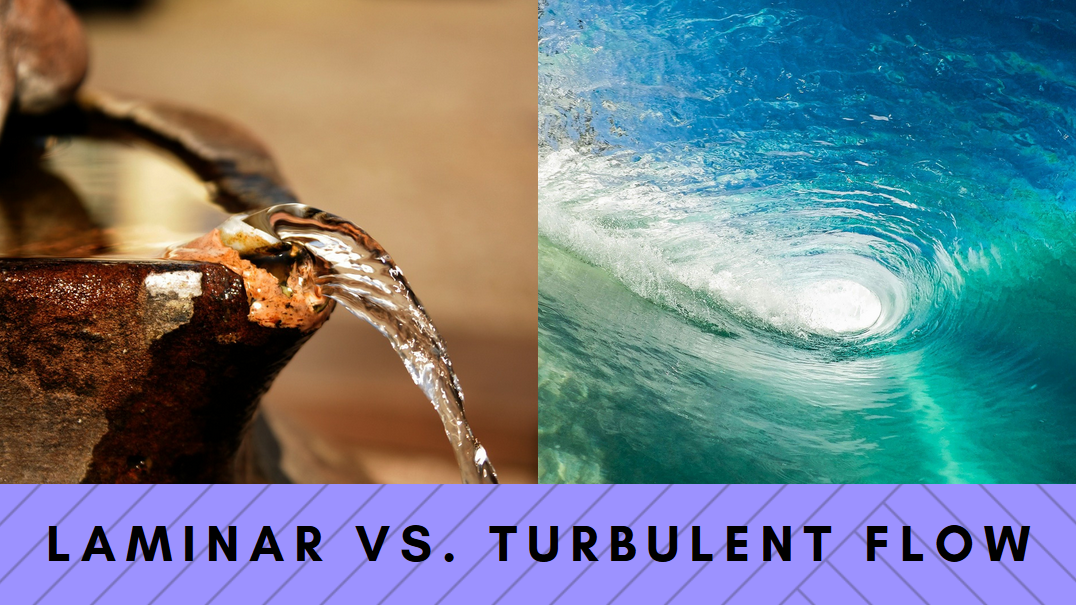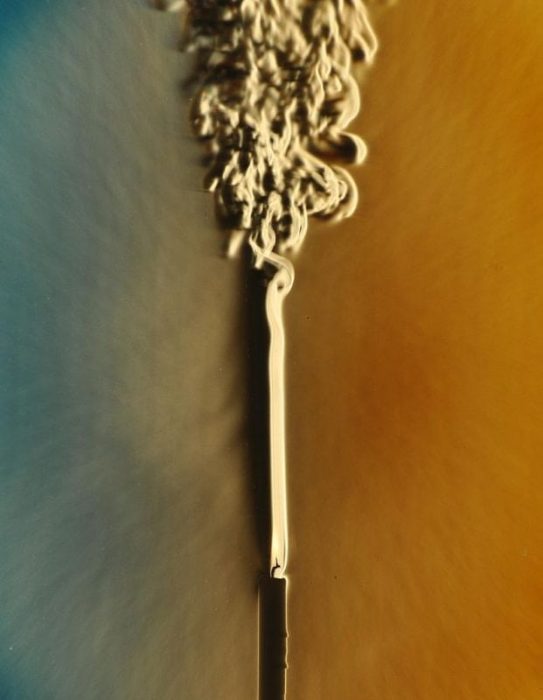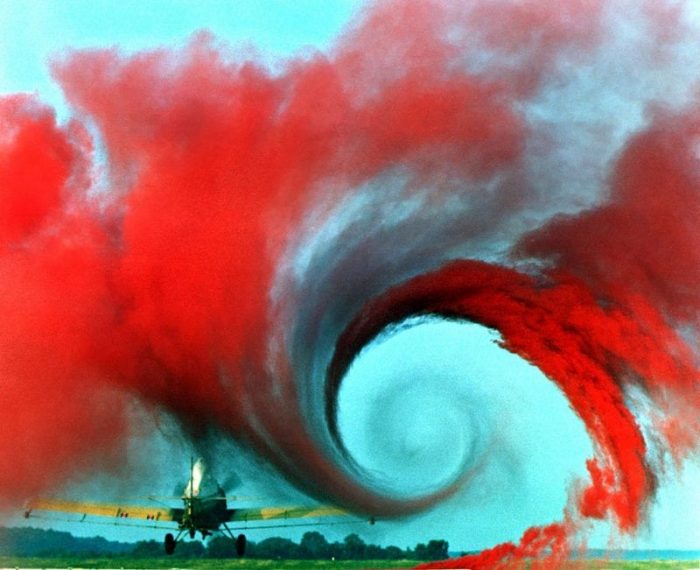
Laminar vs. turbulent flow can characterize how fluid is moving, with a laminar flow being a more smooth, orderly flow, and a turbulent flow being rough and chaotic. Laminar flow has a constant velocity at any point within the fluid, imagine similar to a constant flow of traffic. Turbulent flow is chaotic, forms eddies and whirlpools and is similar to the flow of a whitewater rapid.
Have you heard of the terms turbulent flow and laminar flow before? They refer to the motion of particles as they move through a substance. The motion of a fluid’s particles between the layers of the substance is what determines if the flow is laminar or turbulent. The distinction between laminar and turbulent flow is extremely important in engineering because the type of flow impacts how mass and heat are transferred.
“Water can flow, or it can crash. Be water, my friend.” — Bruce Lee
What is the distinction between the two types of flow exactly? Let’s take a closer look at the difference between turbulent and laminar flow to find out.
In simple terms, laminar flow is when every particle of fluid flows along one smooth path. The particles of the fluid do not interfere with one another, they don’t mix or shift between layers. Turbulent flow is when the flow of a fluid is irregular. Particles in turbulent flow can move back and forth between layers, mixing and falling into whirlpool-like patterns of flow.
That’s the basic difference between laminar and turbulent flow, but to see why these distinctions matter it’s important to look at them in their full context.
Calculating The Flow Of A Fluid – Reynolds Number
What determines if the flow of a fluid is classified as laminar or turbulent is the flow’s Reynolds Number. Reynolds Number is a calculation that defines the flow of a fluid as being the ratio of the inertial forces to the viscous forces.
Here’s the equation for the Reynolds Number:
RE = pVD/μ.
P is the density of the fluid, V refers to the fluid’s velocity, D is the diameter of the pipe which contains the flowing fluid, and μ is the viscosity’s coefficient. If the Reynolds number is calculated at less than 2300, the flow of the fluid is considered to be laminar. If the Reynolds number is greater than 4000, the fluid’s flow is classified as turbulent. While many engineering projects deal with either turbulent or laminar flow, there is an intermediary phase that exists in between the two phases. Transitional flow is classified as the flows that exist between the Reynolds Numbers 2300 and 4000.

Photo: By Gary Settles – Own work, CC BY-SA 3.0, https://commons.wikimedia.org/w/index.php?curid=29522249
Laminar Flow
The primary characteristic of laminar flow is a streamlined flow, lacking any swirls or cross currents. If one imagines different layers of fluid, divided into rows/cylinders with varying radii, the layers of the fluid wouldn’t mix in any manner. The fluid would flow without interference or disturbance, and the path of the flow wouldn’t have any swirls or cross currents.
The layers or “tubes” of the fluid would still flow at different speeds, even though they wouldn’t cross or intersect. The central, innermost layer would have the fastest flow speed while the outer layers would have a much slower flow speed (sometimes hardly moving at all). In general, the velocity of a fluid with laminar flow is extremely low.
Real-world applications for laminar flows include any liquid flowing through a tube. This is because the dimensions of the tube or pipe stay constant and as a result, the volume of the fluid doesn’t have a chance to change. The laminar flow of air over the wing of an airplane is an important consideration when designing planes. The wings of planes are often designed to make sure air flows over them in a laminar way, minimizing turbulence.
Turbulent Flow
Turbulent flow is characterized by the chaotic and rough movement of particles through a region. Imagining layers of fluid again, you can think of the various layers mixing with one another, with a heavy amount of friction existing between the boundaries of the different layers. Molecules are thrown around in an irregular fashion, and whirlpools and waves can easily be found within the flow.
Fluids that are in turbulent flow have a substantial amount of kinetic energy within them. As long as this energy persists, the flow will continue to be turbulent and irregular. Once the energy is used up, the flow transitions to a laminar state. The velocity of a turbulent fluid is typically high, equalizing as it transitions to a laminar flow state.
An easy to grasp example of laminar flow is the waves and currents found in the ocean, which collide and mix with one another. The turbulent nature of the water, and of many fluids, is driven by convection. Convection makes many different fluids, like the air itself, turbulent.
“Flow is the nature of energy; flow is another name of life.” — Banani Ray
Interactions Between Turbulent And Laminar Flow
Fluids can and frequently do transition between turbulent and laminar flows. The transition between the two different kinds of flows may be impacted by a variety of different variables.

Changes in the area that a fluid is flowing through can easily impact the Reynolds Number of a flowing fluid. As an example, think about how the water in a pipe changes in flow when a tap is opened and the water let out. When the water is within a home’s plumbing system it is in laminar flow, but when you turn on the faucet and the water comes out into the sink, the water that hits the bottom of the sink will now be flowing turbulently.
Yet another example is how the blood found in the human body flows. Under most conditions, the blood flows through the body’s arteries and veins in a laminar fashion. Yet if an artery or vein is blocked, is flowing in a direction opposite to the heart’s pressure, or is simply flowing around a curve in the body, the blood flow will be turbulent.

Photo: By NASA Langley Research Center (NASA-LaRC), Edited by Fir0002 – This image or video was cataloged by Langley Research Center of the United States National Aeronautics and Space Administration (NASA) under Photo ID: EL-1996-00130 AND Alternate ID: L90-5919.
Changes in the flow of fluid may also be driven by interactions with an object moving through the air, causing layers of fluid to mix or straighten out as it moves along. For instance, while the air that moves over the wing of a plane is generally flowing in a laminar fashion, the air surrounding the plain is probably flowing turbulently. The tips of airplane wings often create a tip vortex, which causes the air in that region to begin flowing turbulently. This is a form of wake turbulence, the turbulence that is created in the wake of an airplane as it passes through the air.
For the reasons mentioned above, laminar flow and turbulent flow are important considerations in the science of fluid dynamics.









